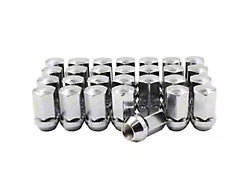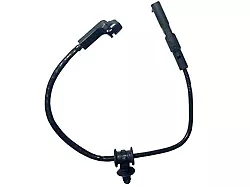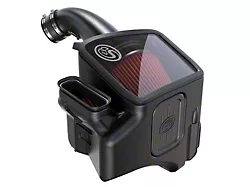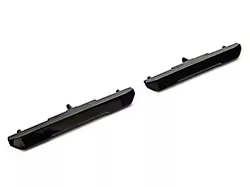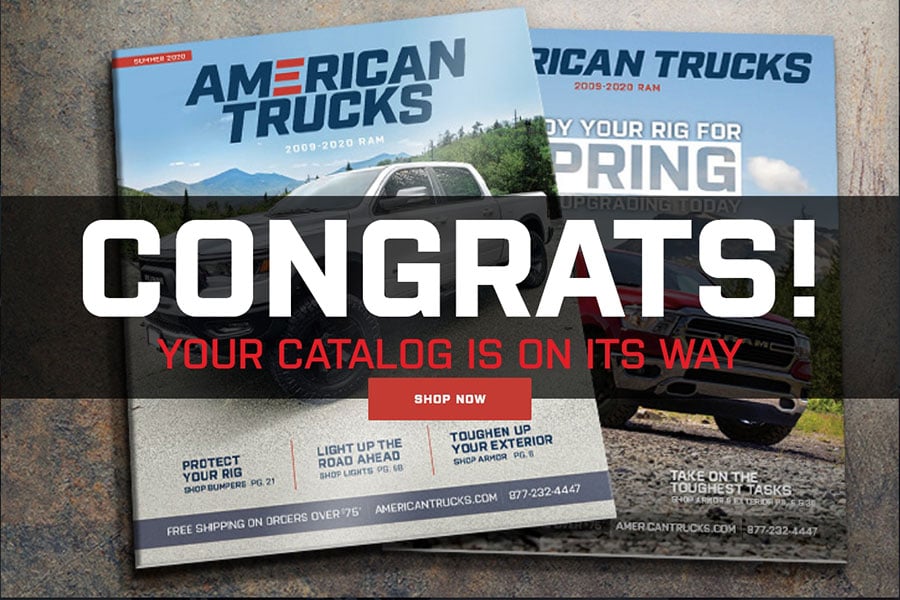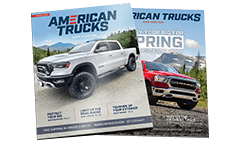
How to Install SuperLift Rear Add-a-Leafs for 1-2 in. Lift (02-08 4WD RAM 1500) on your Dodge RAM
INTRODUCTION
Installation requires a professional mechanic. Prior to beginning, inspect the vehicles steering, driveline, and brake systems, paying close attention to the suspension link arms and bushings, anti-sway bars and bushings, tie rod ends, pitman arm, ball joints and wheel bearings. Also check the steering sector-to-frame and all suspension-to-frame attaching points for stress cracks. The overall vehicle must be in excellent working condition; repair or replace all worn parts.
Read instructions several times before starting. Be sure you have all needed parts and know where they install. Read each step completely as you go.
NOTES:
Prior to operating a torch, protect any heat-sensitive components located in the immediate area by covering them with a water saturated cloth. Most undercoatings are flammable, but can be extinguished using a water-filled spray bottle. Have this and an ABC rated fire extinguisher at hand.
Prior to inserting leafs, be sure all leaf mating surfaces are free of grit, grease, undercoating, etc.
A factory service manual for this particular year and model vehicle must be on hand. The manual will contain fastener torque specs and any assembly techniques or special tool requirements that are unique to this vehicle.
Shock absorber length, depending on the particular vehicle, may not be adequate. Whatever the case, we recommend the installation of a premium shock for optimum performance.
The spring pads (where the leafs or blocks seat on the axle) are prone to collapse or warp, especially towards their ends. The blocks (or springs) require a perfectly flat mating surface or excessive spring axle wrap-up will result. If the pads are not flat, replate or replace them.
Overload AALs are designed to replace the stock spring pack's bottom leafs. The stock bottom leaf can be retained (positioned under the AAL) if the extra lift is desired. Extra lift gained will be the thickness of the stock bottom leaf.
Prior to disassembly, inspect stock U-bolts for corrosion and adequate length. Rear U-bolts will probably be too short if degree shims are used or if the stock overload leaf is retained when overload type AALs are used.
A foot-pound torque reading is given in parenthesis ( ) after each appropriate fastener.
Do not fabricate any components to gain additional suspension height.
Prior to attaching components, be sure all mating surfaces are free of grit, grease, undercoating, etc.
Use the check-off box “” found at each step to help you keep your place. Two “”
denotes that one check-off box is for the driver side and one is for the passenger side.
Unless otherwise noted, always start with the driver side.
INTRODUCTION
Superlift offers two types of add-a-leafs, full length and overload type. The installation process is basically the same for either type; it is their positioning in the spring pack that differs. An AAL is always placed beneath the leaf that is just longer than it so that all spring pack leafs remain progressively longer from bottom to top.
All full length and some overload types require spring pack disassembly. Some springs have fairly thick (3/16" to 1/4") riveted-on steel "straps" that hold the leaf plates together. Generally, the straps must be spread for spring pack disassembly, then re-formed to allow for the AALs' extra thickness. These straps re-form easily when heated and can be reused. Depending on fuel tank location, for safety, it may be required to remove springs from vehicle.
Instead of thick straps, other springs have relatively thin "bend clips" that are not reusable. New 2- piece bend clips are included with these applications. Some applications include aluminum degree shims to help reduce driveshaft angle.
INSTALLATION PROCEDURE
1) PREPARE VEHICLE...
Put vehicle in neutral, raise vehicle with a suitable jack and secure jack stands beneath the frame rails. For front installations, the stands normally are placed just behind the springs' rear hangers. For rear installations, the stands are generally placed just in front of the springs' front hangers.
Put vehicle in Park, or low gear for manual transmissions, and chock the tires remaining on the floor to prevent accidental movement.
Remove tires and position floor jacks to support rear axle.
2) SPRING PACK DISASSEMBLY…
Remove spring-to-axle U-bolts and move axle several inches away from springs.
If the straps or bend clips that hold the spring pack together must be disturbed, do these first then remove the spring center bolt. Have C-clamps in place on either side of each strap, clamp, or center bolt before the piece is spread / removed.
CAUTION: Take care when releasing the C-clamps since the springs are under load and will "spring" apart when released.
Inspect the spring pads as described in the NOTES section and repair / replace as needed.
3) SPRING PACK ASSEMBLY…
On each side, insert the AAL in the proper pyramid order.
Recompress the pack with the C-clamp, not the center bolt, to avoid stripping the bolt / nut threads. After tightening, trim excess bolt.
If applicable, re-form the straps or install new bend clips. If heat is used on the straps, allow them to cool naturally and thoroughly before removing the C-clamps.
NOTE: Certain AAL applications (mostly Jeeps) include tapered aluminum degree shims to reduce rear driveshaft angle. The shims are to be attached to the main leaf tops (leafs with the mounting eyes) via the center bolts. The shims' curved surface seat against the springs; the flat (top) sides mate to the spring pads on the axle housing. Face the shims' thick end towards front of vehicle.
4) REATTACHING THE AXLE…
Using the floor jack(s), mate the springs to their pads, being sure that the center bolt heads seat properly. Evenly torque the U-bolts using a "X" tightening sequence.
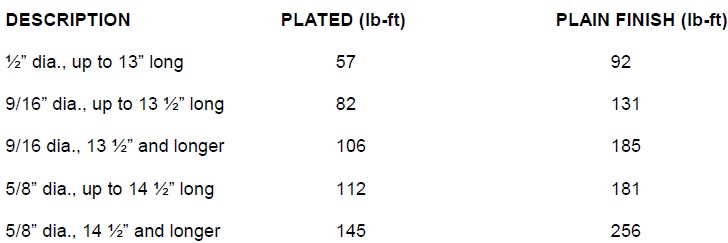
If the complete spring packs were removed from the vehicle, snug-up, but do not fully tighten the stock shackle and stationary spring eye bolts. These bolts are not torqued until Step 8 when the suspension is supporting vehicle weight.
5) FRONT AXLE ONLY…
Most models have turning radius stop bolts located on the front axle knuckles. In full lock turns, these stops limit turning before the tires made contact with the leaf springs or the steering sector itself is "bottomed out". Adjust each stop bolt to where it limits turning at least 1/2" before tire-to-spring contact occurs or the sector is bottomed out. Tire-to-spring contact may cause tire damage and, in extreme cases, increase the possibility of vehicle rollover. If the sector is "bottomed" and receives a blow (from contact with a curb, rut, etc.), sector damage and / or failure may occur.
6) CLEARANCE CHECK...
With the vehicle still on jack stands, and the suspension “hanging” at full extension travel, cycle steering lock-to-lock and check all components for proper operation and clearances. Pay special attention to the clearance between the tires / wheels and brake hoses, wiring, etc.
Lower vehicle to the floor.
7) FINAL CLEARANCE and TORQUE CHECK...
With vehicle on floor, cycle steering lock-to-lock and inspect the tires / wheels, and the steering, suspension, and brake systems for proper operation, tightness, and adequate clearance.
8) HEADLIGHTS...
Readjust headlights to proper setting.
9) SUPERLIFT WARNING DECAL...
Install the WARNING TO DRIVER decal on the inside of the windshield, or on the dash, within driver’s view. Refer to the “NOTICE TO DEALER AND VEHICLE OWNER” section below.
10) ALIGNMENT...
On solid axle applications, alignment is not significantly altered by a 1" to 2" lift AAL. But, we suggest that alignment be checked to ensure correct tire wear characteristics and driveability.
NOTE: On Ford F250 / 350 trucks with IFS, camber and toe angles must be reset to factory specifications.




